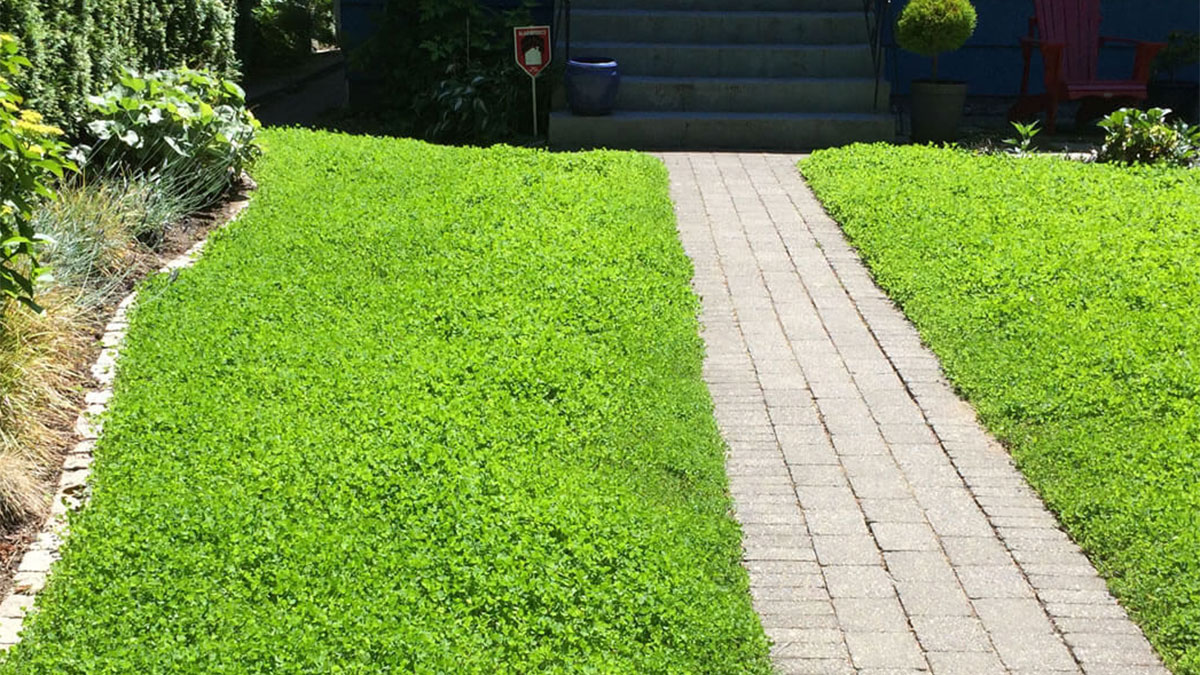Transform Your Tired Lawn into a Lush Clover Oasis

Tired of mowing, fertilizing, and watering a demanding grass lawn? Clover might be the low-maintenance alternative you’ve been searching for. With its soft texture, natural greenness, and pollinator appeal, clover creates a vibrant, eco-friendly yard that looks great and works hard for your garden.
Why consider a clover lawn?
Clover lawns are gaining popularity as a low-maintenance, eco-friendly alternative to traditional turf grass. Unlike most grass varieties, clover requires minimal mowing, no fertilizing, and can stay green even during dry spells. It also attracts pollinators like bees and butterflies, contributing to a healthier local ecosystem.
Choosing the right type of clover for your yard
White clover is the most commonly used type for residential lawns. It’s hardy, grows quickly, and blends well with grass. Microclover is a smaller variety that offers a more uniform appearance, while red clover is taller and better suited for wildflower-style lawns.
If you live in a cooler climate or want a clover that blends seamlessly with grass, microclover may be your best option. For larger spaces or a more rustic look, red clover adds a splash of color and attracts even more pollinators. Your choice should reflect your aesthetic preferences and the level of traffic your lawn receives.
Preparing your lawn for a clover transformation
Start by evaluating your existing lawn. Remove as many weeds as possible and mow your grass low to reduce competition. Rake away thatch and debris to ensure good seed-to-soil contact.
Check your soil pH, which should fall between 6.0 and 7.0 for optimal clover growth. If needed, amend your soil with compost to improve drainage and provide nutrients. Loosening compacted soil will help seeds germinate more evenly.
Seeding clover into an existing lawn or starting fresh
Clover can be sown either into an existing lawn or on bare soil if you’re starting from scratch. The best time to plant is early spring or late summer when soil temperatures are warm but conditions are not too dry.
To overseed an existing lawn, mow the grass short and rake the soil lightly. Broadcast the clover seed evenly by hand or with a spreader, then water gently but thoroughly. For bare soil, till lightly, spread the seed, and press it into the surface to ensure contact.
Watering and caring for your new clover lawn
Clover seeds need consistent moisture to germinate, so water daily for the first two weeks or until sprouts appear. Once established, clover requires significantly less water than traditional grass.
Clover doesn’t grow tall, but occasional mowing can help keep it tidy and prevent flowering if that’s your preference. Avoid using nitrogen-based fertilizers, as clover naturally fixes nitrogen in the soil.
Common issues and how to handle them
If your clover looks yellow or patchy, it may be struggling with compacted soil or poor drainage. Loosen the soil and top-dress with compost to improve conditions. Re-seed thin areas during a mild weather window.
Clover can sometimes spread beyond its intended borders. Regular edging and trimming will help keep it contained. If you notice pests or fungal issues, try organic remedies such as neem oil or improve air circulation with light mowing.
Long-term maintenance and seasonal care
Once established, clover lawns need little attention aside from occasional mowing and watering during dry spells. In colder climates, clover may go dormant in winter but will return with warmer temperatures.
To keep your lawn looking thick and lush, overseed annually in spring or fall. This helps fill in bare patches and prevents weeds from taking over. A regular mowing schedule of every two to three weeks is usually enough to maintain an attractive appearance.
Conclusion
Swapping out or blending your traditional lawn with clover can transform not just your yard but your entire gardening routine. It’s easy to grow, gentle on the environment, and packed with charm. Whether you’re starting fresh or reseeding an existing lawn, clover is a beautiful step toward a more sustainable outdoor space.
